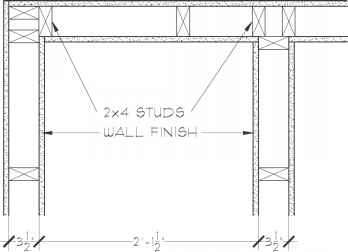
Although the job description of a lineman varies from one state to another, it generally involves construction of electric transmission lines and distribution lines. This job includes the installation and maintenance of these lines as well as emergency repairs and maintenance. Salary ranges and educational requirements vary by state. Below you will find information about the occupation and requirements for becoming a lineman. This career requires technical training and high school diplomas.
Perspectives on the job
Lineman could be the right job for you if your interest is in an electrical career. Linemen work with telephone and fiber optic cables, and some jobs even involve lower voltage electricity. Because linemen are required to work on their feet and in hazardous conditions, they must be physically fit. A lineman should be able communicate well and have problem-solving abilities. Linemen who possess more experience are clearly better than less experienced workers.

The salary of a lineman can be very high but requires a high level of skill. A formal apprenticeship program will be required in order to become an experienced lineman. While you spend your days working alongside an experienced lineman, you'll also spend time in classrooms learning safety procedures and proper tool use. Along with hands-on training, certifications are required.
Education is required
There are many reasons you might want to become a Lineman. Linemen are responsible for maintaining and constructing electrical transmission and distribution cables. As a lineworker you will install, service and repair electric cables. Depending on your work, you could also be responsible to make emergency repairs. You can always advance your career by getting more experience. These are just a few of the many benefits that you can enjoy when you become a Lineworker.
Although lineman's don’t need a college degree to be employed, most employers require a highschool diploma or an equivalent. They also need to have a passing mark in algebra. A paid four-year apprenticeship for apprentice linemen can also be done. It includes both on-the-job and classroom training. A degree in line construction or electrical safety can be helpful. Linemen who have completed this training are often eligible to apply for a role as a Journeyman.
Salary range
According to TurboTax data 289 users, the salary range of a Lineman is $82,750 to $92,364. These figures do not include tips and bonuses, taxable wages, or tips. The pay scale for a Lineman varies depending on their experience and geographic location. Salaries can vary depending on the employer and where they are located. Below you will see an example lineman's salary package.

Linemen in the National Football League (NFL), are responsible for protecting the quarterback. The linemen's salary varies depending on their experience and level of responsibility. Linemen not only protect the quarterback but also play an important role in blocking. A typical line configuration would include a center, two guards with two tackles, one or two tight end and two tackles. The salary ranges of linemen will vary depending on what team they are playing for and how much experience they have.
FAQ
When do I need to pay the service/contractor for it?
The type of service is dependent on how much you pay. If you hire a contractor for a roof installation, payments would be made as soon as the work is completed. However, when you purchase a product from a seller, such as a kitchen range oven, you may only pay once you have received and tested it.
What's the purpose of the service contract?
The purpose of a Service Agreement (or Service Agreement) is to describe the terms upon which a customer accepts to buy goods from you. You will also be able to provide these services to customers for payment.
The most widely used type of this document is a Sales Order Form. This section lists the products being purchased by the customer as well as their price. The order will also include any additional items, such as delivery costs, VAT, insurance, and so forth. Finally, you will specify when the order should delivery and be paid for.
You can use different documents depending on the nature or transaction.
An invoice may be used if you provide a service and not a product.
You will probably need a Purchase Order Form to purchase items from another party.
Include all information when creating a sales order form.
Remember: The more detailed your sales order form is, the easier it will be for the buyer to understand.
Who pays for the service?
Your SCA will indicate who is responsible in paying for the service. The service provider may be entitled to compensation if it isn't paid in full.
What is a Service Agreement Example?
A service arrangement template is a form of document that contains all details concerning a particular service. This template can be used to create a standard service agreement.
Service agreements are very important because they define the relationship between two parties.
They enable both parties to understand the other's expectations and needs. They ensure both parties are fully informed about the terms of the agreement before they sign it.
Do I have any other options?
Yes!
There are many different ways you can prepare yourself to negotiate.
One way to do this is to put down the terms & conditions of the agreement
Are there other things I should consider?
Yes. You should check the laws in your area about the types of projects that you are permitted to undertake and the requirements you must meet. You may need to obtain approval from the local council before you can build in some states. Some states only require you to notify them about your plans. You can check with the local authorities for their views on this issue.
Statistics
- (v) Place or places of performance of the prime contract and first-tier subcontracts estimated at $10 million or more, if known. (acquisition.gov)
- (d) Contractor disputes related to compliance with its obligation shall be handled according to the rules, regulations, and relevant orders of the Secretary of Labor (see 41 CFR60-1.1). (acquisition.gov)
- (1) Except as provided in paragraphs (a)(4) and (a)(8) of this section, if the estimated amount of the contract or subcontract is $10 million or more, the contracting officer shall request clearance from the appropriate OFCCP regional office before- (acquisition.gov)
- Depending on the client's trustworthiness and financial stability, a deposit is usually 10 to 50% of the total contract amount. (lawdepot.com)
- While we offer all our high-quality services at competitive prices, we know that many who need our services are on fixed incomes, so we offer a 10 percent discount for seniors and military members. (homeservicecontractorsinc.com)
External Links
How To
What should a service contract include?
A Service Agreement (SA) is essential to any business relationship. It sets out what you expect from one another and how you intend to achieve these expectations. The SA also describes when and how you expect the other side to meet its contractual obligations.
The following are key elements for a successful SA
-
Both parties agree on the scope of work and the services they require.
-
Payment terms details, including start date and expiration dates for goods/services.
-
An agreed price for the project.
-
Additional costs, such as VAT, etc.
-
If there are any other issues that need to be addressed.
-
Who will be held responsible for any problems that may arise on the job?
-
How disputes will be resolved.
-
What happens if one of the parties breaches the contract?
-
What happens in the case of a dispute?
-
When does this contract go into effect
-
What happens when one of the parties doesn't perform?
-
How long will it take to pay invoices
-
Who pays for expenses such as travel?
-
Where the money came from.
-
What happens if the client changes his mind about the project?
-
What happens if your supplier doesn't show up?
-
Who has permission to view the site during construction
-
What happens when the customer cancels a project?
-
What happens if the product malfunctions?
-
What happens if the manufacturer refuses to supply parts.
-
What happens if the equipment breaks down.
-
What happens when the project takes longer to complete?
-
What happens if work isn’t completed in the timeframe agreed upon?
-
What happens if the final product isn't up to expectations?
-
What happens if the cost overruns.
-
What happens if materials are not delivered on time?
-
What happens if the material arrives broken?
-
What happens when the products don't meet standards?
-
What happens if the job has to be canceled?
-
What happens to the company if it goes bust?